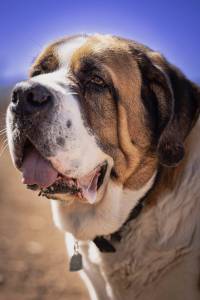
Dogs affected by Cushing’s disease may exhibit a range of symptoms that can be subtle at first, making it crucial for pet owners to pay close attention to any changes in their dog’s behavior or physical condition. One of the most common early signs of Cushing’s disease is increased thirst and urination. If you notice your dog drinking more water than usual or needing to go out to urinate more frequently, it could be an indication of the disease.
Another early sign to watch for is an increase in appetite without any corresponding weight gain. Dogs with Cushing’s disease may experience a surge in hunger, yet they might not put on extra pounds or may even lose weight despite eating more. This change in eating behavior, especially when combined with other symptoms, should prompt a visit to the veterinarian for further evaluation.
Furthermore, changes in a dog’s activity level and behavior can also signal the onset of Cushing’s disease. You may notice that your once energetic and playful pet becomes lethargic, weak, or less interested in activities they used to enjoy. Additionally, dogs with Cushing’s disease may develop muscle weakness, leading to difficulty in performing routine physical activities.
In some cases, skin and coat changes are among the first signs of Cushing’s disease. Your dog may develop thinning skin, hair loss, or have skin that bruises easily. The coat may become dull, dry, and prone to developing skin infections. It’s essential to monitor your dog’s skin and coat for any unusual changes and seek veterinary advice if you notice such alterations.
As Cushing’s disease progresses, other symptoms may become more apparent, such as a pot-bellied appearance due to abdominal enlargement, panting, and even behavioral changes. If you suspect that your dog may be exhibiting any of these signs, it’s crucial to consult with a veterinarian promptly. Early diagnosis and management can help improve your dog’s quality of life and prevent the condition from advancing.
While the first signs of Cushing’s disease in dogs can be subtle and easily overlooked, being observant and proactive in seeking veterinary care can make a significant difference in your pet’s well-being. Remember, as a pet owner, you are your dog’s advocate, and early detection of any health concerns can lead to timely intervention and improved outcomes.
In conclusion, recognizing the early signs of Cushing’s disease in dogs allows for timely veterinary intervention, which can greatly impact your pet’s health and well-being. By staying attuned to changes in your dog’s thirst, appetite, behavior, and physical condition, you can play a crucial role in ensuring your furry companion receives the care they need to live a happy and healthy life. If you suspect that your dog may be showing signs of Cushing’s disease, don’t hesitate to reach out to your veterinarian for guidance and support.[/fusion_text]



